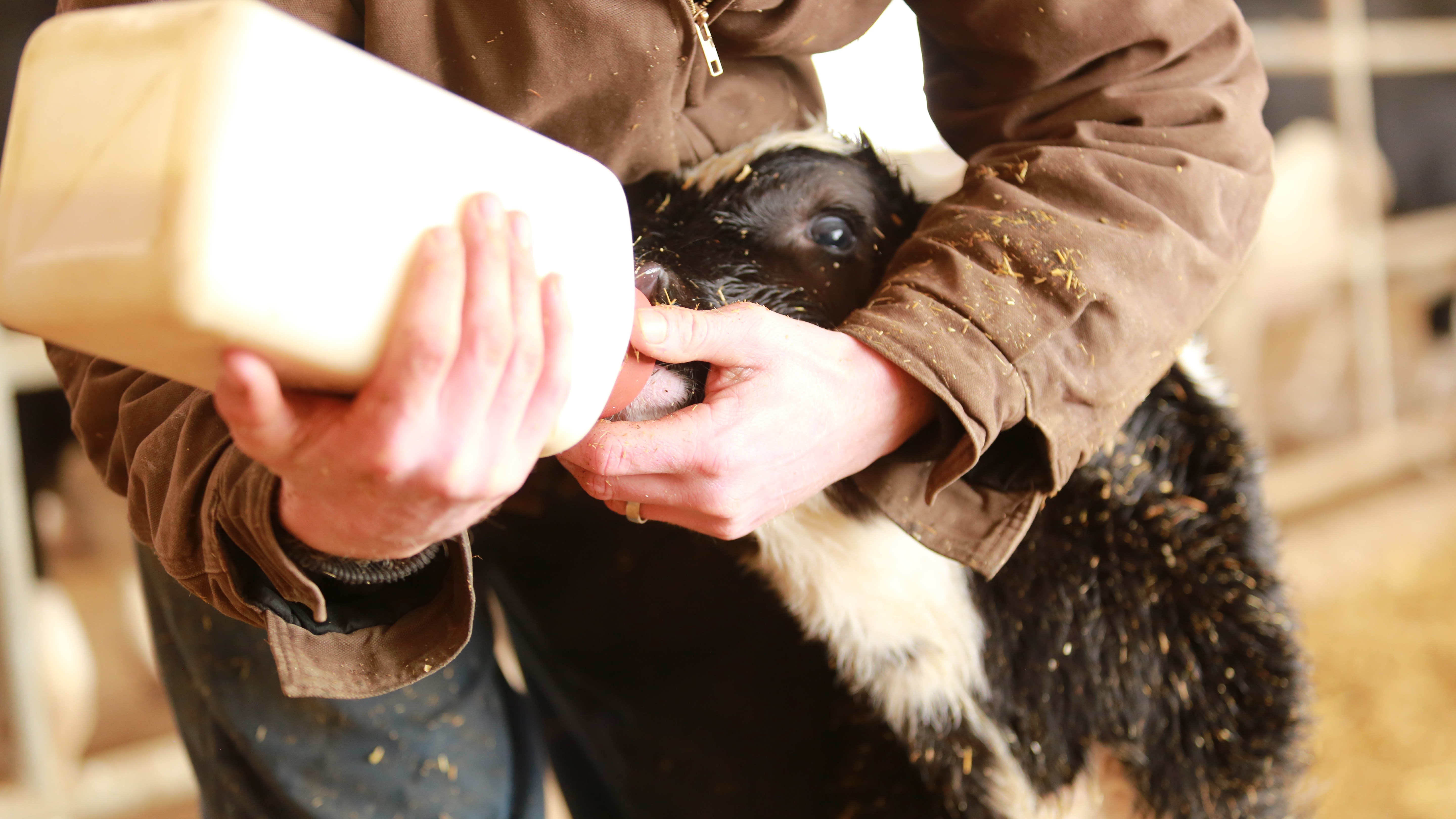Healthy Calf Conference
Follow to stay up-to-date on all Healthy Calf Conference updates. Speaker announcements, sponsorship information, registration announcements, and more.
Colostrum is the “first milk” from the milking immediately after a cow has calved. It is rich in nutrients and provides antibodies which help the calf’s immune system develop. It should be collected as soon as possible after calving and fed within 30 minutes of birth, or by six hours at the latest. Approximately eight to 37 per cent of neonatal calves in Ontario do not receive sufficient immunity because of FPT, which may be because of poor colostrum management (Trotz-Williams et al., 2008, Windeyer et al., 2014).
When feeding the newborn calf colostrum, it is important to remember these four things: Cleanliness, Quality, Quantity and Quickness.

Collecting colostrum
Use standard clean milking practices when collecting colostrum.
Colostrum quality
Colostrum should look like and have the consistency of melted vanilla ice cream. Runny, thin colostrum or colostrum mixed with blood are signs of poor quality. To test for quality, use a colostrometer.
Colostrum replacers
A colostral supplement should be considered when maternal colostrum is of poor quality, if it is contaminated by pathogens, or if fresh colostrum is unavailable.
Feeding colostrum
Feed 4 litres within 30 minutes of birth. Feed another 2 litres of colostrum within 8 hours of birth. Feed calves 3 litres of colostrum two times per day at 12-hour intervals for 3 days.
Antibody absorption
By 24 hours old, the calf’s ability to absorb antibodies has rapidly declined. This decline starts 30 minutes after birth which stresses the importance of feeding calves colostrum as soon as they are born.
Pooling colostrum
Feeding pooled colostrum – mixing colostrum from various sources together – to calves is NOT recommended because of the potential for spreading disease.
Storing colostrum
Colostrum can be kept in the fridge or freezer, but never at room temperature.
Follow to stay up-to-date on all Healthy Calf Conference updates. Speaker announcements, sponsorship information, registration announcements, and more.
The Codes of Practice are nationally developed guidelines for the care and handling of farm animals. They serve as our national understanding of animal care requirements and recommended practices.